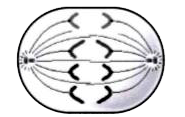Answer the followoing based on the diagram given below .

Which behavior of water in shown in the graph ?
Anomalous behavior of water.
Topper's Solved these Questions
- HEATBOOK - CHETAN PUBLICATIONCHAPTER - HEATEXERCISE - Paragraph Based Question .
4 Videos
- HEATBOOK - CHETAN PUBLICATIONCHAPTER - HEATEXERCISE - ASSIGNMENT - 5 (Answer the following)
3 Videos
- HEATBOOK - CHETAN PUBLICATIONCHAPTER - HEATEXERCISE - Darw a neat and labelled diagram.
4 Videos
- GRAVITATIONBOOK - CHETAN PUBLICATIONCHAPTER - GRAVITATIONEXERCISE - ASSIGNMENT-1
15 Videos
- LENSESBOOK - CHETAN PUBLICATIONCHAPTER - LENSESEXERCISE - Assignment
14 Videos
Similar Questions
Write a note based on the diagram given below.

View SolutionWhich technique is shown by the diagram given below ?

View SolutionWhich technique is shown by the diagram given below ?

View SolutionDirection for questions: Answer questions based on your understanding of the following diagram given below :

Where does ribosomes preset in the cell ?
View SolutionStudy the diagram given below and answer the following questions.

View SolutionGiven below is a diagram representing a stage during the mitotic cell division। Study the diagram and answer the following questions :

Draw a neat, labelled diagram of the stage which follows the one shown in the diagram.
View SolutionA river water sample is poured in four containers and subjected to four different processes as shown in the following diagram.


Answer the following questions by analysing the given diagram
Which water is the most suitable for consumption?
View SolutionA ray of light travels from water to air as shown in the diagram given below:

Copy the diagram and complete the path of the ray. Given the critical angle for water is 48∘.
View SolutionIn the following graph. the displacements of a particle of a progressive wave at different times are shown. Refer to this graph and answer the questions given below.

Which one ·or the following is the amplitude of the wave?
View SolutionStudy the diagram given below and answer the questions that follow:

Name the structure shown in the diagram. State in which part of the body it is present.
View Solution
